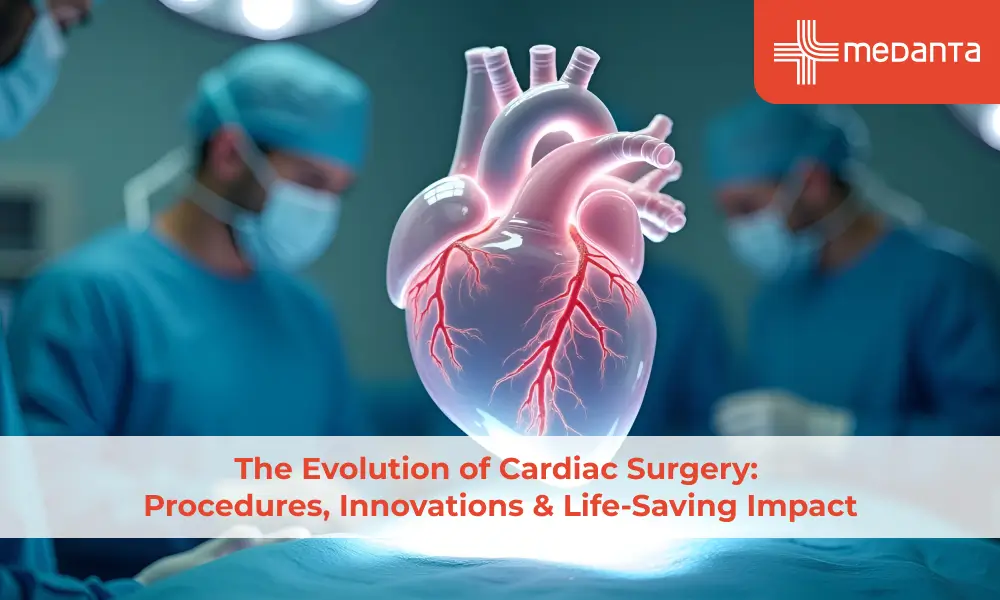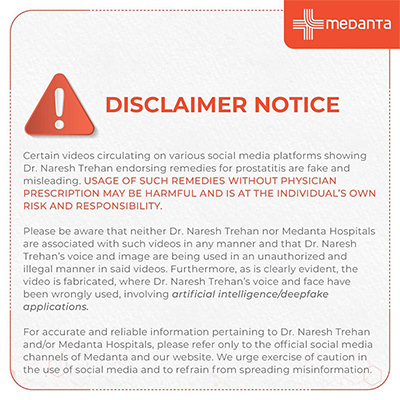The Evolution of Cardiac Surgery: Procedures, Innovations & Life-Saving Impact

TABLE OF CONTENTS
Can you imagine a world where a malfunctioning heart meant a death sentence? Not long ago, this harsh reality was a daily occurrence. But thanks to the dedication and pioneering spirit of countless individuals, cardiac surgery has undergone a remarkable revolution, transforming once-fatal conditions into treatable realities.
From its early beginnings to the cutting-edge procedures and technologies available today, cardiac surgery has made tremendous strides in improving patient outcomes and quality of life. In this blog, we’ll talk about these advancements in detail!
The Evolution of Cardiac Surgery
In the early 1900s, heart surgery was a terrifying prospect. Openings into the beating heart were considered near-suicidal, and anesthesia was in its infancy. Yet, amidst the grim reality, pioneers like Alexis Carrel dared to dream. In 1908, Carrel successfully sutured a dog's torn blood vessel, proving the possibility of repairing the heart itself. This ignited a spark, attracting passionate surgeons like Ludwig Rehn and Rudolph Matas, who ventured into uncharted territory, performing the first successful coronary artery ligation and pericardial window surgery, respectively.
Pioneering surgeons like Dr. C. Walton Lillehei and Dr. John W. Kirklin paved the way for modern cardiac procedures. The first successful open-heart surgery was performed in 1953 by Dr. John Gibbon, who used a heart-lung machine to temporarily bypass the patient's heart and lungs during surgery.
Key Procedures in Cardiac Surgery
The human heart is a tireless pump powering our every moment. However, it can also falter sometimes. When that happens, cardiac surgery steps in. But with a range of procedures available, it's natural to feel a bit lost in the maze. Here are the different types of cardiac surgeries:
Coronary Artery Bypass Grafting (CABG): This cardiovascular operation reroutes blood flow around blocked coronary arteries, the vessels supplying oxygen-rich blood to the heart muscle. Surgeons reroute blood flow using healthy vessels from other parts of your body, creating a new pathway for oxygen-rich blood to reach your heart muscle. This procedure, often called a "bypass," improves blood flow and alleviates chest pain.
Heart Valve Repair or Replacement: Faulty valves can stiffen, leak, or narrow, leading to various problems. Surgeons can either repair these valves, akin to fixing a leaky faucet, or replace them with artificial valves made from metal, tissue, or animal heart valves. These procedures restore proper blood flow and prevent complications like heart failure.
Aortic Aneurysm Repair: This procedure addresses a bulge in the aorta, the main artery leaving the heart. Imagine a weak spot in a hose developing a balloon-like expansion. Surgeons either reinforce the weakened area with a patch or replace the entire section with a synthetic graft, preventing a potentially life-threatening rupture.
Technological Advancements in Cardiac Surgery
The survival rate for cardiac surgeries has dramatically improved over the past few decades, with success rates now exceeding 95% for some procedures, compared to much lower rates in the early days of cardiac surgery. Technological advancements have played a pivotal role in advancing cardiac surgery, improving patient outcomes, and reducing the invasiveness of procedures. These innovations have transformed the field, making procedures safer, more effective, and less traumatic for patients.
Minimally Invasive Techniques: One of the most significant advancements in cardiac surgery is the development of minimally invasive techniques. These techniques involve making smaller incisions and using specialised instruments to access the heart, rather than the traditional open-heart surgery approach. Minimally invasive procedures result in less pain, reduced scarring, shorter recovery times, and lower risk of complications compared to traditional surgery.
Robotic-Assisted Surgery: Robotic-assisted surgery has revolutionised cardiac surgery by offering greater precision and control to surgeons. Robotic systems allow for more dexterous movements in tight spaces, enabling surgeons to perform complex procedures with enhanced accuracy. This technology has been particularly beneficial for delicate procedures, such as mitral valve repair, where precision is critical for optimal outcomes.
3D Printing in Surgical Planning: 3D printing has emerged as a valuable tool in cardiac surgery for creating patient-specific models of the heart. These models allow surgeons to visualise complex cardiac anatomy before surgery, aiding in surgical planning and enhancing surgical precision. 3D printing also enables surgeons to practise procedures on lifelike models, improving their skills and reducing the risk of errors during surgery.
Artificial Intelligence in Patient Care: Artificial intelligence (AI) is increasingly being used in cardiac surgery to enhance patient care and outcomes. AI algorithms can analyse vast amounts of patient data to predict outcomes, identify patterns, and personalise treatment plans. AI can also assist in real-time decision-making during surgery, providing surgeons with valuable insights and improving surgical precision.
The Impact of Cardiac Surgery on Saving Lives
The impact of cardiovascular operations on saving lives and improving quality of life cannot be overstated. Success stories abound, with patients who have undergone cardiac surgery experiencing significant improvements in their symptoms and overall health.
Studies have shown that heart operations can significantly prolong the lives of patients with cardiovascular diseases, with many patients living for decades after their procedures. The quality of life for these patients is also greatly improved, with many able to resume normal activities and enjoy an active lifestyle.
Long-term survival rates for patients undergoing heart operation have also improved significantly over the years, thanks to advancements in surgical techniques, anaesthesia, and post-operative care. Patients who undergo heart operations today have a much higher chance of surviving the procedure and living a long and healthy life than ever before.
Wrapping Up
Cardiac surgery has undergone a remarkable revolution over the years, transforming the treatment of cardiovascular diseases and saving countless lives in the process. From its early beginnings to the cutting-edge procedures and technologies available today, cardiac surgery continues to push the boundaries of what is possible in modern medicine.
With ongoing advancements and research, the future of cardiac surgery looks promising, offering hope for continued improvements in patient outcomes and quality of life.
If you need help with any kind of cardiac issues, we recommend you consult a skilled cardiologist at your nearest tertiary-care hospital as soon as possible. Don’t delay the diagnosis process and take care of your health today!






